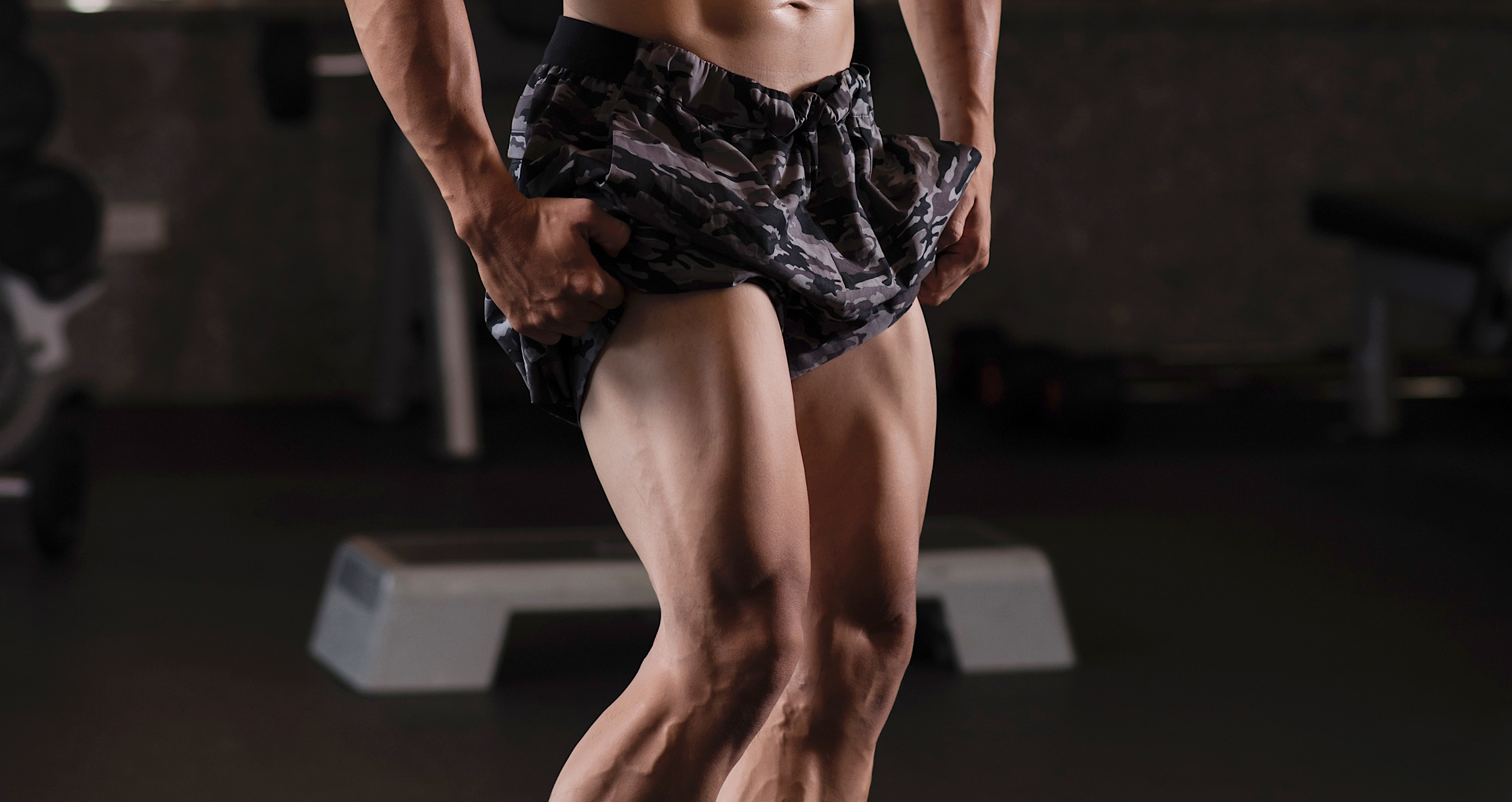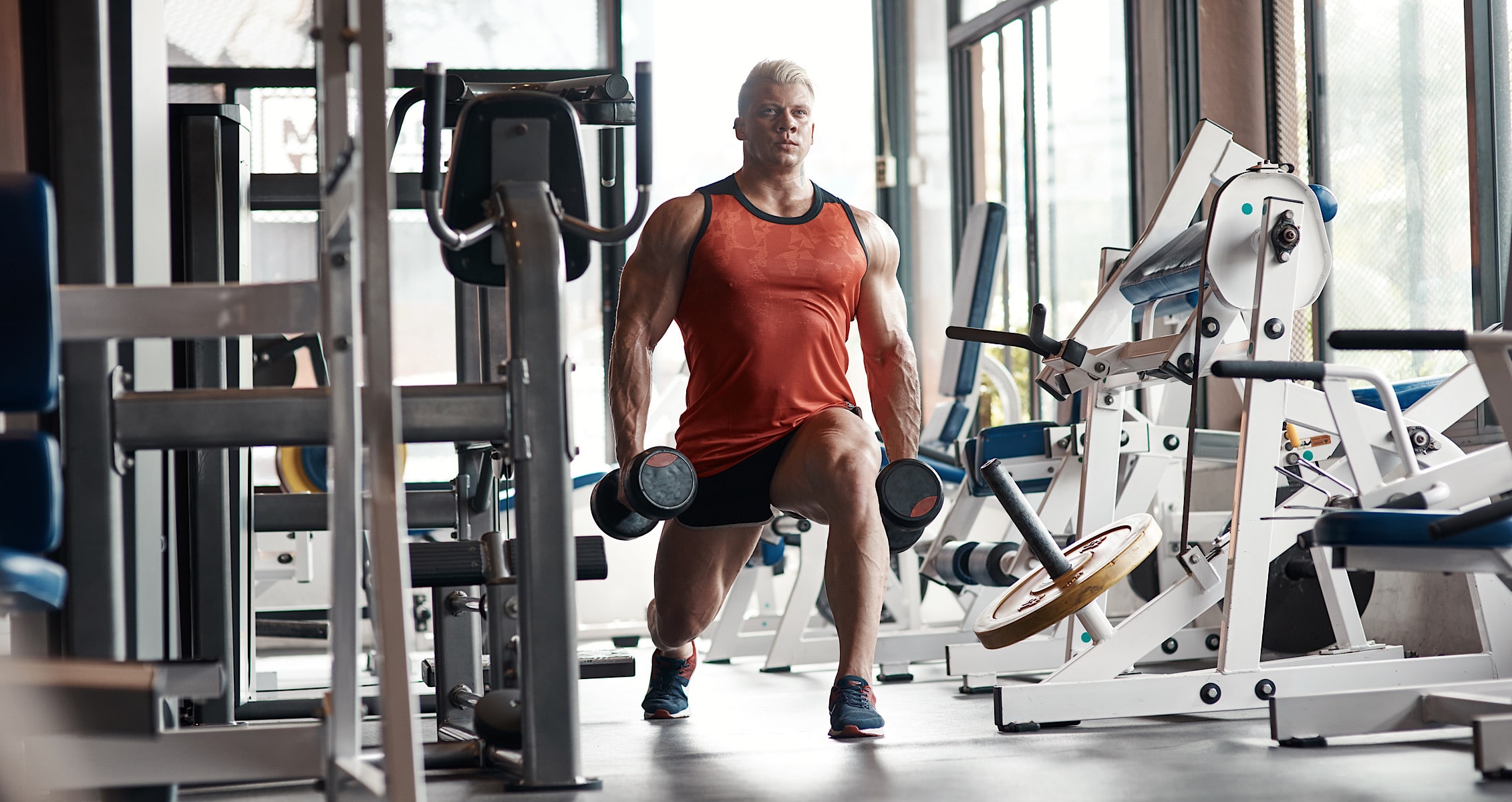Build Bigger Quads with Bad Knees
If “bad knees” is your excuse every leg day, I apologize in advance. You can’t use it as your crutch anymore. Depending on the severity of your knee pain (i.e. a legitimate injury vs. aching every time it rains), rest assured you can still train your quads and continue to see gains.
General Guidelines When Training with Knee Pain
• Refer out. Go to a doctor or other health professional to get a second opinion. An MRI would be ideal but can take weeks if not months to book. In the meantime, see a specialist. Take what they say into consideration and blend it with a smart approach to training.
• If it hurts, stop. This is your body telling you something’s off. Learn to listen to these signals.
• Train around it. There’s always something you can do. Knee pain is not an excuse to stop training. Find what works for you and do it (knee-friendly exercises are included in this article).
• Train your hamstrings and glutes. Most people overtrain their “mirror muscles” and undertrain their posterior chain. Strengthen your glutes and hammies for better knee support.
• Train your ankle mobility. How often do you walk into the gym and see people working on their ankle mobility? If this actually happened, knee pain would be far less common. The more mobile and strong your ankles are, the better your knees will feel.
Things to Avoid When Training with Knee Pain

• Plyometric exercises. High-impact plyometric exercises are a no-no (at least for now).
• Ballistic movements/sprinting. Similarly, running or other ballistic movements should be avoidedgiven the sheer pressure put on the knees. Your knees absorb about 8-12 times your bodyweight per stride when running. That’s a lot of force to be put on a joint with pre-existing pain.
• Olympic weightlifting. The Olympic lifts are often caught in a deep squat position with a high level of reflex out of the bottom of the lift. The springing motion out of the hole combined with heavy weights isn’t a great situation for your knees (at least for now).
• Forward and back lunges. Lunging forward then pushing your weight back to your starting position tends to put force on the front of the knee (particularly around the patellar tendon). That said, they aren’t evil. But they do place more sheer force around the knee when compared to reverse lunges.
• Max effort deep squats. Put your ego aside for a moment and take a break from the max effortsquats. All things considered, you can still squat onto a high box and alleviate some of the demand on your knees.
Knee-Friendly Exercises for Bigger, Stronger Quads
1. Airdyne
Yeah, cardio sucks. But the Airdyne is a great way to pump blood to your quads during your warm-up while keeping your knees in a stable position. The higher your seat, the less your knees have to bend. Find a height that works for you so you can pedal without knee pain. Do a steady 3-5 minutes before lifting. You should be sweating and feel your quads blow up when you’re done.
2. TKE (Terminal Knee Extension)
This subtle movement packs a punch provided you do it optimally.
Loop a resistance band around a squat rig or something sturdy and have the other end behind your knee. Back up until you feel the band pull your knee forward and perform the TKE by bending your knee slightly and extending it. You should be focusing on your quad/VMO as much as possible here.
Perform 15-20 reps for 2-3 sets each side at the beginning and end of your workouts.
3. Monster Walks
Glute work isn’t a common line of action when dealing with knee pain, but it should be. Stronger glutes improve hip and thigh alignment, reducing the sheer force placed on the knee.
Insert monster walks.
You can perform monster walks laterally (side to side) for glute engagement, or backwards for quad destruction.
For glute engagement, place a Hip Circle around your knees and bend them slightly with your feet pointed forward. Take small steps to the side while keeping constant tension on the band. Resist the urge to let your knees cave in by keeping your hips externally rotated and press out against the band throughout your set.Take 5-10 steps to the right then 5-10 steps to the leftfor 3-4 sets.
The second option is to place the band around your ankles and walk backwards with small micro steps, pumping blood to your quads. Take 10-20 steps backwards for 3-4 sets.
4. Box Squat
Squatting onto a box takes a lot of the pressure out of your knees while providing depth indication. The box (or bench) should be high enough so your hip crease is slightly above your knee when you sit onto it (i.e. your thigh should be higher than parallel with the floor). This will allow you to continue to squat relatively heavy provided you don’t feel any pain in the knees when doing so. That said, this isn’t an excuse to use an absurdly high box and crank out max–effort-ego-quarter squats. Find the range of motion you can perform a pain-free squat in and load it accordingly.
5. Reverse Lunge
Reverse lunges just feel better on the knees, given the relatively vertical angle of the tibia (shin). Granted, your knees have to travel past your toes for most daily and athletic activities. But as mentioned, forward/back lunges tend to put more sheer force on the knees overtime (especially if you have pre-existing knee pain). For this reason, I tend to favour reverse lunges in most of my programming.
6. Reverse Sled Drag
Attach a TRX or suspension trainer to a sled. With your arms straight, hips back, and core braced, walk backward with small micro steps. This is similar to a loaded high-rep TKE and minimizes the force placed on the knees while brutally attacking the quads.
You can perform reverse sled drags at the beginning of your workouts as part of your warm-up or at the end as your finisher.
The Workout: Putting It All Together

A1. TKE (Terminal Knee Extension): 3 sets of 15-20 each leg
A2. Lateral Monster Walks: 3 sets of 10 each direction
Rest 30-45 sec after A1 and A2 have been completed.
B. Box Squat (High Box): 3 sets of 6-10
Rest 2-3 min between sets.
C. Reverse Lunge: 3 sets of 8-12 each leg
Rest 1-2 min between sets.
D. Reverse Sled Drag: 3 sets (walk full length of turf strip and back)
Rest 1-2 min between sets.
Additional Considerations
• Always warm up beforehand. This goes without saying and should be a ritual for all of your workouts, whether or not you have knee pain.
• Ankle mobility between sets. Limited ankle mobility is usually the leading cause of knee pain. Get those reps in and work it in between sets.
• Soft tissue work for quads/IT band between sets. More often than not, rolling out your IT band will help reduce your knee pain. Include it in your warm-ups and do it between sets to maximize recovery.
• Shy away from the leg extension machine. Meatheads love the leg extension given the direct pump it provides for the quads. It’s also a big no-no when overused in conjunction with pre-existing knee pain. Stay away from it (at least for now).
Summary
Knee pain sucks but it’s not an excuse to sit on your ass. Treat it as an opportunity to strengthen your weak areas and train smarter moving forward.
